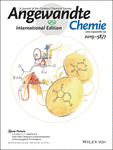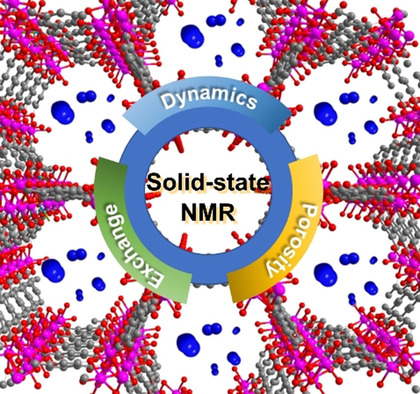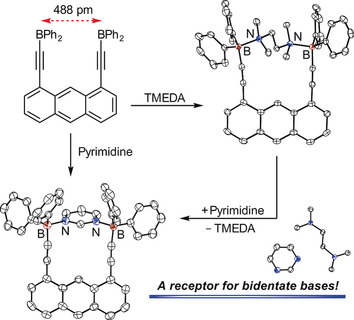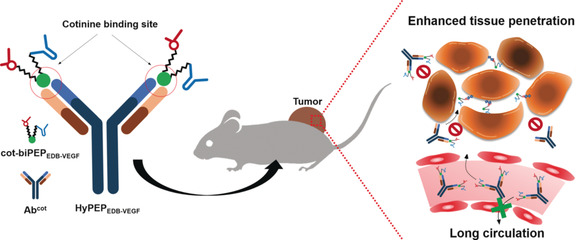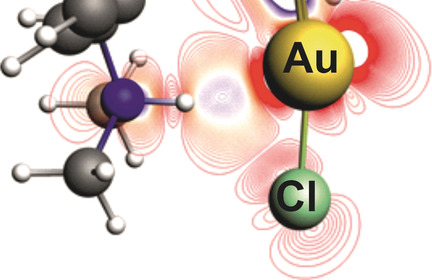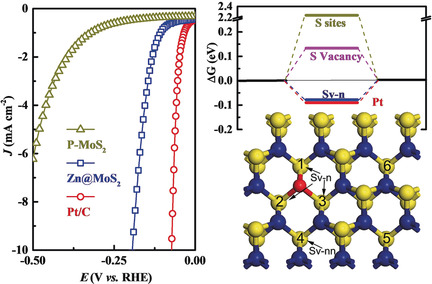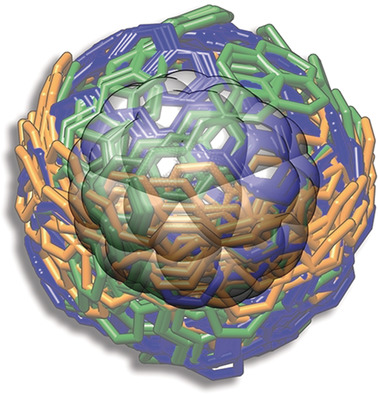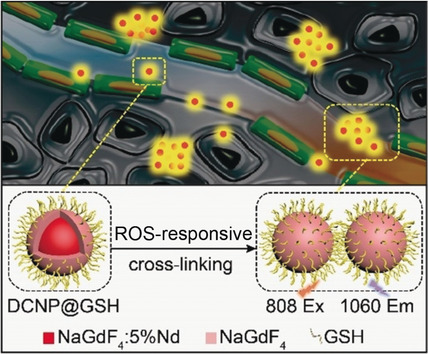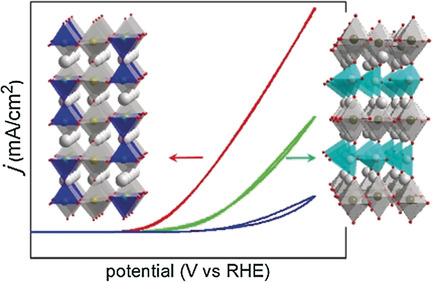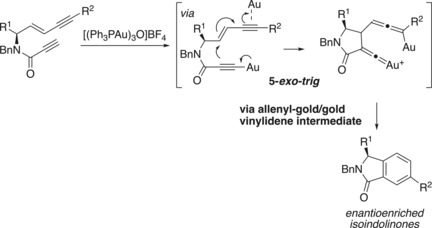Journal list menu
Export Citations
Download PDFs
Cover Pictures
Cover Picture: Dual Gold-Catalyzed Cycloaromatization of Unconjugated (E)-Enediynes (Angew. Chem. Int. Ed. 7/2019)
- Page: 1849
- First Published: 21 December 2018
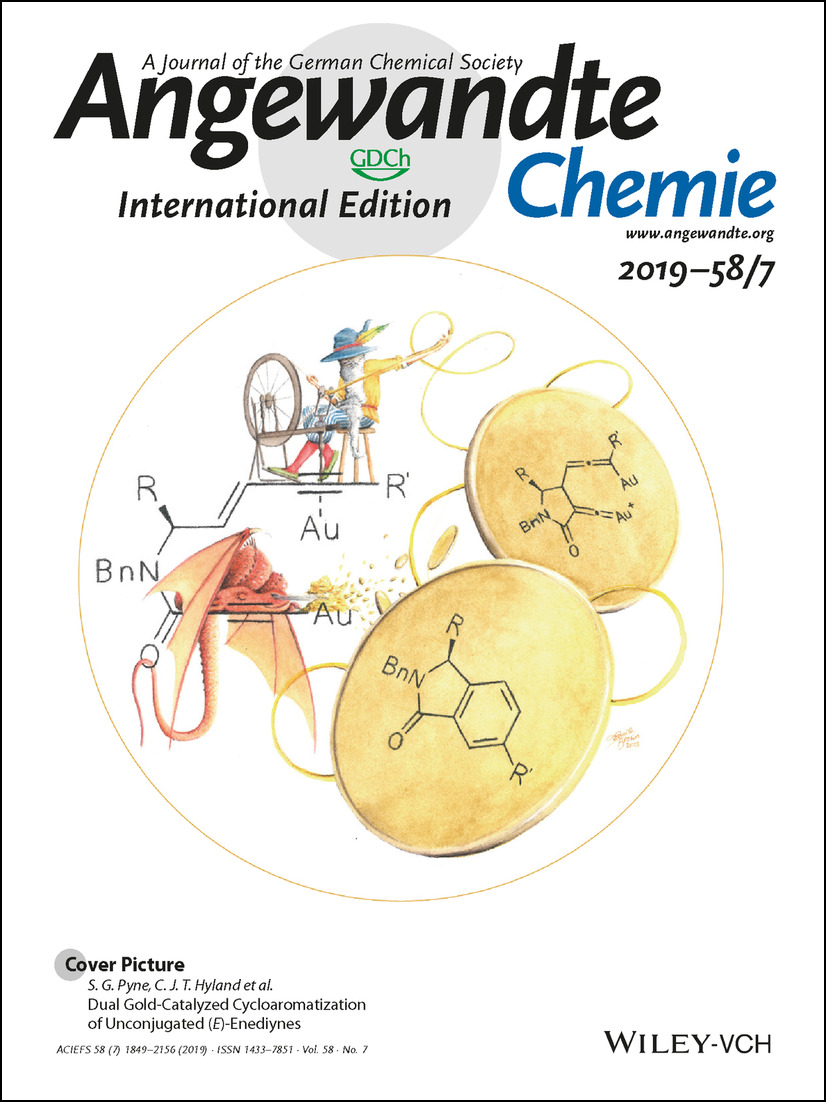
Dual gold activation is an important catalytic mode in homogeneous catalysis. In their Communication on page 2114 ff., S. G. Pyne, C. J. T. Hyland, and co-workers report that (E)-enediynes undergo a dual gold-catalyzed cycloaromatization towards isoindolinones. They use electronic differentiation of triple bonds to direct the formation of a propiolic gold acetylide, represented as a gold-coveting dragon, which then reacts with a π-coordinated enyne moiety, illustrated by Rumpelstilzchen spinning his golden thread.
Inside Cover: Access to N-Substituted 2-Pyridones by Catalytic Intermolecular Dearomatization and 1,4-Acyl Transfer (Angew. Chem. Int. Ed. 7/2019)
- Page: 1850
- First Published: 16 January 2019
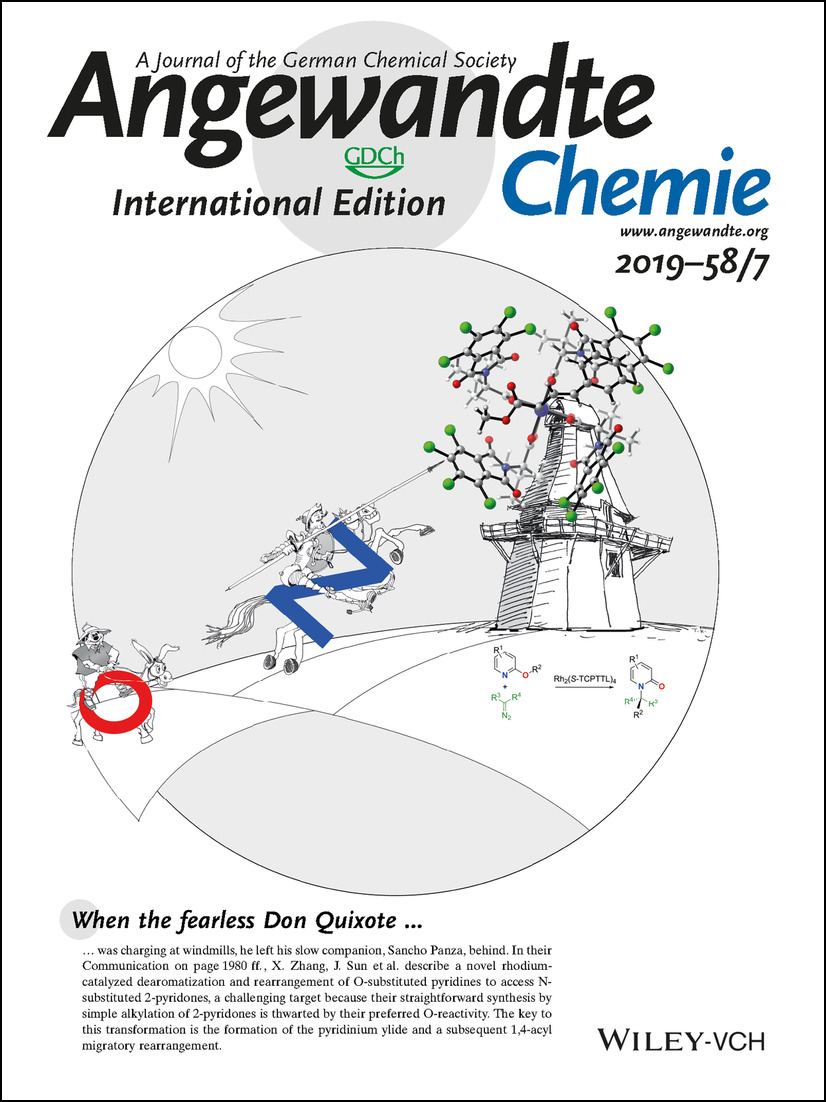
When the fearless Don Quixote was charging at windmills, he left his slow companion, Sancho Panza, behind. In their Communication on page 1980 ff., X. Zhang, J. Sun et al. describe a novel rhodium-catalyzed dearomatization and rearrangement of O-substituted pyridines to access N-substituted 2-pyridones, a challenging target because their straightforward synthesis by simple alkylation of 2-pyridones is thwarted by their preferred O-reactivity. The key to this transformation is the formation of the pyridinium ylide and a subsequent 1,4-acyl migratory rearrangement.
Inside Back Cover: Puffing Up Energetic Metal–Organic Frameworks to Large Carbon Networks with Hierarchical Porosity and Atomically Dispersed Metal Sites (Angew. Chem. Int. Ed. 7/2019)
- Page: 2155
- First Published: 28 December 2018
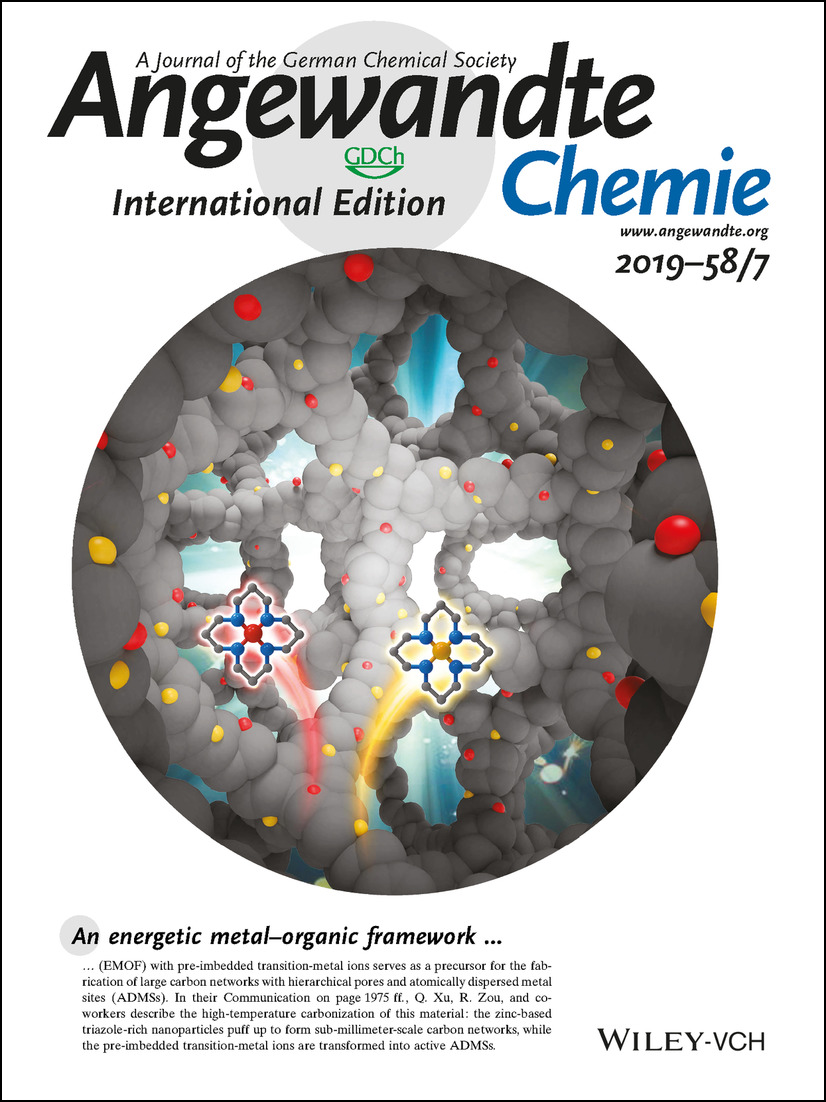
An energetic metal–organic framework (EMOF) with pre-imbedded transition-metal ions serves as a precursor for the fabrication of large carbon networks with hierarchical pores and atomically dispersed metal sites (ADMSs). In their Communication on page 1975 ff., Q. Xu, R. Zou, and co-workers describe the high-temperature carbonization of this material: the zinc-based triazole-rich nanoparticles puff up to form sub-millimeter-scale carbon networks, while the pre-imbedded transition-metal ions are transformed into active ADMSs.
Back Cover: Achieving Efficient Incorporation of π-Electrons into Graphitic Carbon Nitride for Markedly Improved Hydrogen Generation (Angew. Chem. Int. Ed. 7/2019)
- Page: 2156
- First Published: 24 January 2019
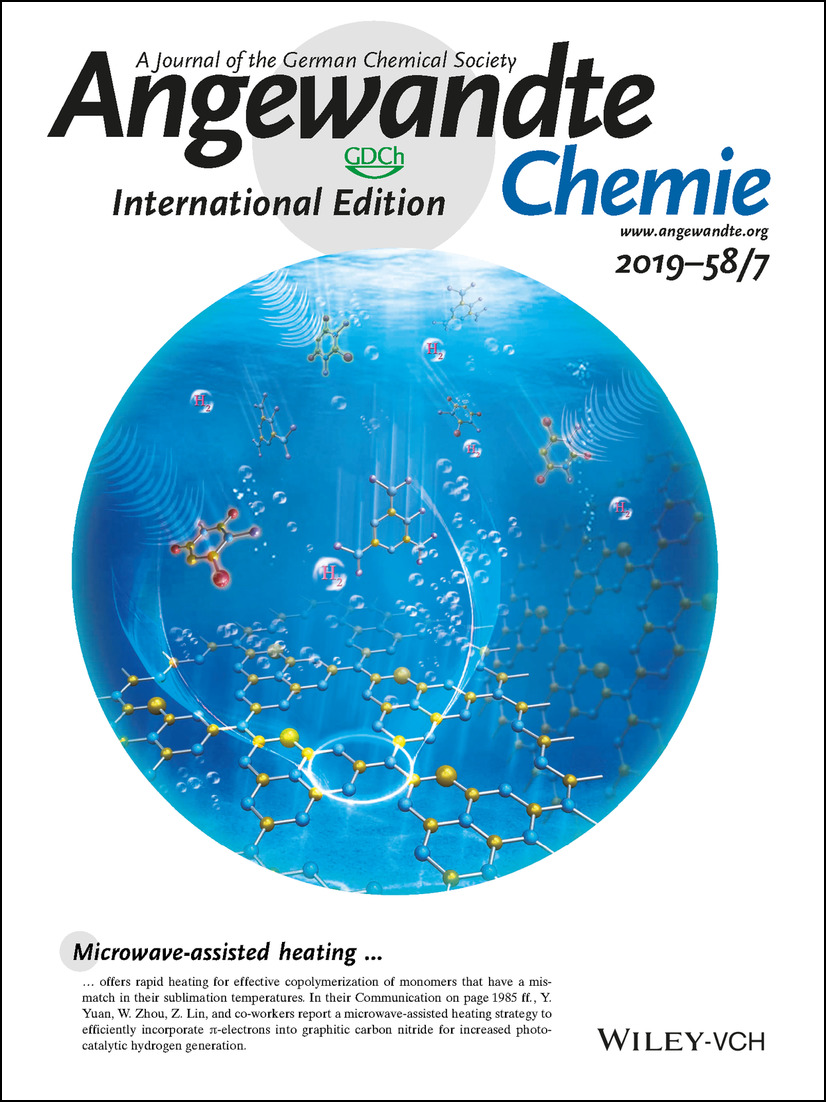
Microwave-assisted heating offers rapid heating for effective copolymerization of monomers that have a mismatch in their sublimation temperatures. In their Communication on page 1985 ff., Y. Yuan, W. Zhou, Z. Lin, and co-workers report a microwave-assisted heating strategy to efficiently incorporate π-electrons into graphitic carbon nitride for increased photocatalytic hydrogen generation.
Frontispiece
Frontispiece: Photochemical Conjugation and One-Pot Radiolabelling of Antibodies for Immuno-PET
- First Published: 04 February 2019
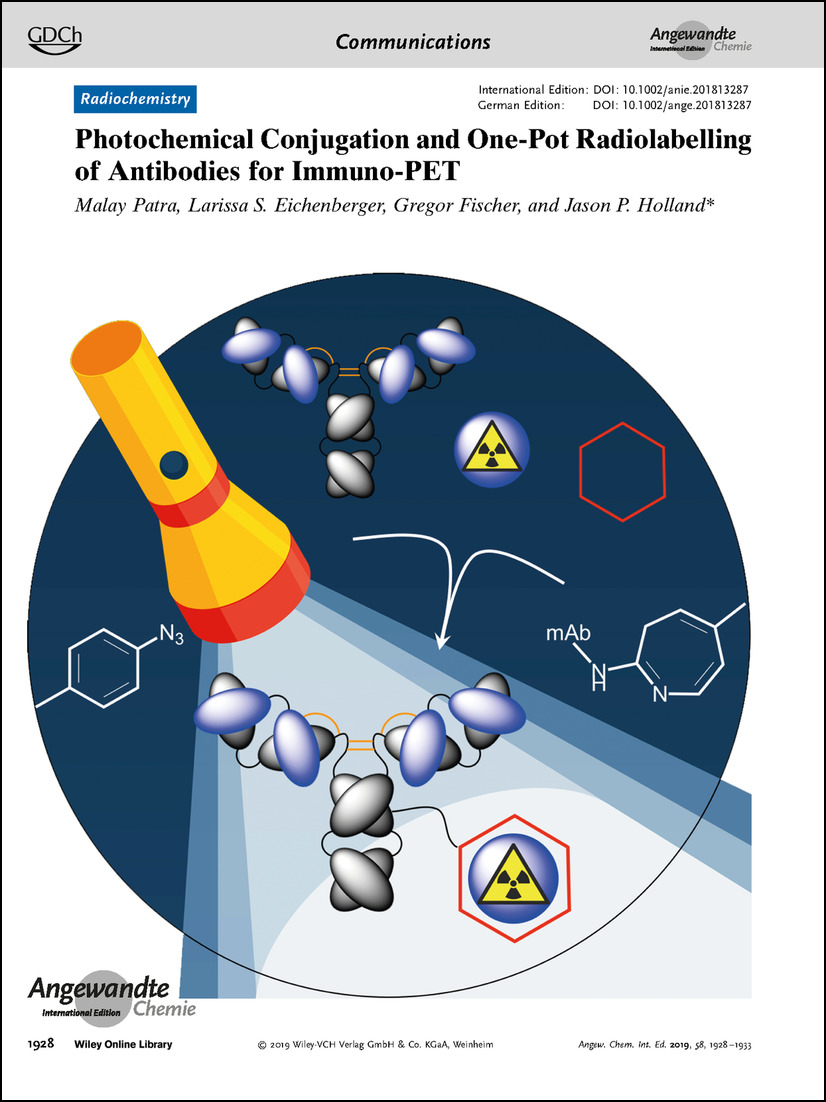
Radiochemistry. In their Communication on page 1928 ff., J. P. Holland and co-workers demonstrate that photochemical conjugation reactions can be combined with radiochemistry in a one-pot process to yield radiolabelled antibodies in just a few minutes.
Graphical Abstract
Graphical Abstract: Angew. Chem. Int. Ed. 7/2019
- Pages: 1853-1867
- First Published: 04 February 2019
Corrigenda
Corrigendum: Nickel-Catalyzed Barton Decarboxylation and Giese Reactions: A Practical Take on Classic Transforms
- Page: 1866
- First Published: 14 November 2018
Corrigendum: Operando X-Ray Absorption Spectroscopy Shows Iron Oxidation Is Concurrent with Oxygen Evolution in Cobalt–Iron (Oxy)hydroxide Electrocatalysts
- Page: 1867
- First Published: 14 November 2018
News
Spotlights on our sister journals: Angew. Chem. Int. Ed. 7/2019
- Pages: 1870-1874
- First Published: 04 February 2019
Author Profile
News
Ernst Haage Prize: T.-P. Fellinger / IUPAC–ThalesNano Prize: C. O. Kappe / Alessandro Volta Medal: W. Schuhmann
- Page: 1878
- First Published: 18 December 2018
Minireviews
Chalcogen Bonding
Chalcogen Bonding: An Overview
- Pages: 1880-1891
- First Published: 17 September 2018
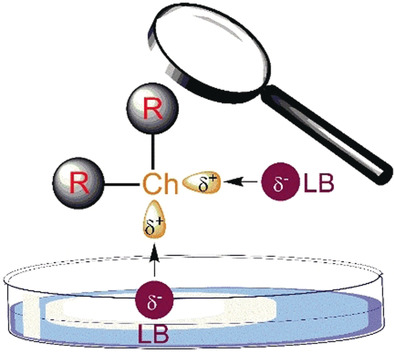
Building bridges: Chalcogen bonds are noncovalent interactions similar to hydrogen bonds that are based on electrophilic chalcogen substituents. This Minireview provides an overview on the origin and features of chalcogen bonding as well as its applications in the solid state and in solution. A certain focus will be on the latter and particularly on the recent introduction of chalcogen bonding in noncovalent organocatalysis. LB=Lewis base.
Synthetic Membranes
Membrane Filtration with Liquids: A Global Approach with Prior Successes, New Developments and Unresolved Challenges
- Pages: 1892-1902
- First Published: 29 October 2018
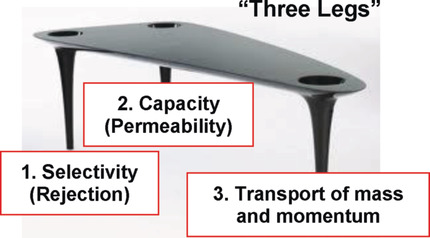
Energy-consuming thermal separation processes such as distillation will eventually be replaced by low energy-consuming processes like membrane filtration. This change has already occurred for desalination of seawater. Major challenges, however, remain with respect to increasing selectivity and permeation flux and controlling mass transport. New predictive models are needed that account for all “three legs”—selectivity, capacity and transport of mass and momentum.
Reviews
Functional Materials
Phenolic Building Blocks for the Assembly of Functional Materials
- Pages: 1904-1927
- First Published: 16 September 2018
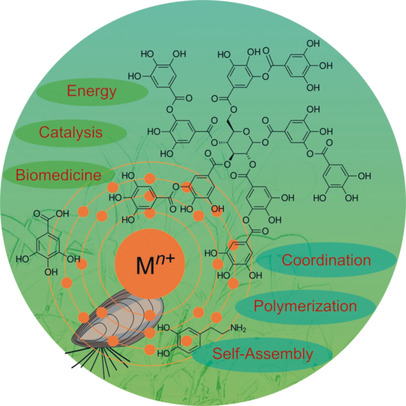
Phenolics on the rise: Recent advances in the preparation of functional materials, namely thin films, particles, and bulk materials, based on phenolic building blocks and their diverse applications, ranging from biomedicine to catalysis, are highlighted. This Review will help integrate various disciplines that use phenols and serve as a guide for the development of future materials.
Communications
Radiochemistry
Photochemical Conjugation and One-Pot Radiolabelling of Antibodies for Immuno-PET
- Pages: 1928-1933
- First Published: 05 December 2018
Chromophores
The Effective Conjugation Length Is Responsible for the Red/Green Spectral Tuning in the Cyanobacteriochrome Slr1393g3
- Pages: 1934-1938
- First Published: 03 December 2018

Color change: The origin of the spectral shift from a red- to a green-absorbing form in the cyanobacteriochrome Slr1393g3 was identified by combined quantum mechanics/molecular mechanics simulations and wave function analysis. The calculations reveal that the effective conjugation length in the chromophore becomes shorter upon conversion from the red to the green form.
Coordination Chemistry
A Three-Membered Cyclic Phosphasilene
- Pages: 1939-1944
- First Published: 13 December 2018
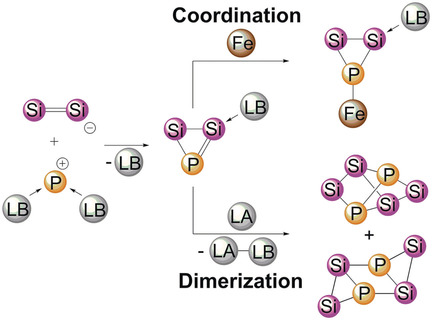
The smallest cyclic Si=P species: A phosphorus(I) cation was used as a precursor for the synthesis of the first three-membered cyclic phosphasilene. The highly strained ring compound can be coordinated to a transition metal through the ylidic phosphorus center or “clicked” with itself to give two cluster-like Si4P2 isomers.
Photochromism
External Reversal of Chirality Transfer in Photoswitches
- Pages: 1945-1949
- First Published: 04 December 2018

Which way to go? The monoterpene l-menthone was incorporated into the backbone of a photochromic diarylethene. Chirality transfer upon photocyclization leads to preferred formation of one major stereoisomer. Complete reversal of the diastereomeric outcome was achieved by altering either the chemical environment or the irradiation wavelength, resulting in selective formation of the minor isomer.
Fluorine Chemistry
Making the SF5 Group More Accessible: A Gas-Reagent-Free Approach to Aryl Tetrafluoro-λ6-sulfanyl Chlorides
- Pages: 1950-1954
- First Published: 14 November 2018

Group therapy: Employing easy-to-handle trichloroisocyanuric acid, potassium fluoride, and catalytic amounts of acid allows simple, mild and direct access to aryl-SF4Cl intermediates that have either not been or cannot be prepared using other methods. The approach also provides access to aryl-SF3 and aryl-SeF3 compounds, which extend the applications of this chemistry beyond arene SF5-functionalization.
Cycloaddition
Kinetic Studies of Donor–Acceptor Cyclopropanes: The Influence of Structural and Electronic Properties on the Reactivity
- Pages: 1955-1959
- First Published: 18 December 2018

Who is faster? The reactivity of donor–acceptor cyclopropanes was investigated in (3+n) cycloaddition reactions with an aldehyde, a nitrone, and an isobenzofuran by NMR and in operando IR spectroscopy. The obtained reaction rates were compared with the structural and electronic properties of the donor–acceptor cyclopropanes.
Polymer Drug Carriers
Digging into the Sequential Space of Thiolactone Precision Polymers: A Combinatorial Strategy to Identify Functional Domains
- Pages: 1960-1964
- First Published: 19 November 2018

Sequence coins function: Sequences that bind m-THPC are selected from a library of thiolactone (Tla)/Michael oligomers by single-bead readout with MALDI-TOF MS/MS. The corresponding Tla/Michael-PEG conjugates make m-THPC available in solution and allow drug payload as well as drug release kinetics to be fine-tuned by sequence variation in the precision segment.
Molecular Recognition
Bidentate Boron Lewis Acids: Selectivity in Host–Guest Complex Formation
- Pages: 1965-1969
- First Published: 21 December 2018
Asymmetric Catalysis
Kinetic Resolution of Tertiary Propargylic Alcohols by Enantioselective Cu−H-Catalyzed Si−O Coupling
- Pages: 1970-1974
- First Published: 20 December 2018

Matchmaker: The commercially available precatalyst system MesCu/(R,R)-Ph-BPE couples Ph3SiH with the fast-reacting enantiomer of racemic mixtures of tertiary propargylic alcohols. This non-enzymatic kinetic resolution provides access to synthetically valuable and versatile enantiomerically enriched tertiary propargylic alcohols and the corresponding silyl ethers (see scheme).
Decorated Carbon Networks | Hot Paper
Puffing Up Energetic Metal–Organic Frameworks to Large Carbon Networks with Hierarchical Porosity and Atomically Dispersed Metal Sites
- Pages: 1975-1979
- First Published: 06 December 2018

Like puffed rice! Metal–organic frameworks (MOFs) composed of high-energy ligands (1H-1,2,3-triazole) and volatile zinc nodes decompose/evaporate upon pyrolysis. The carbon networks foam, while the pre-imbedded Fe and Co ions are transformed into active atomically doped metal sites (ADMSs). These ADMS-decorated carbon networks with hierarchical pores are highly active catalysts for the oxygen reduction reaction.
2-Pyridone Synthesis | Very Important Paper
Access to N-Substituted 2-Pyridones by Catalytic Intermolecular Dearomatization and 1,4-Acyl Transfer
- Pages: 1980-1984
- First Published: 05 December 2018

Metal–carbene reaction: A novel rhodium-catalyzed dearomatization of O-substituted pyridines provides N-substituted 2-pyridones. A computational study suggests a mechanism involving the formation of a pyridinium ylide followed by 1,4-acyl migratory rearrangement from O to C. When chiral dirhodium complexes serve as the catalyst, the asymmetric variant proceeds with excellent enantioselective control.
Photocatalysis | Very Important Paper
Achieving Efficient Incorporation of π-Electrons into Graphitic Carbon Nitride for Markedly Improved Hydrogen Generation
- Pages: 1985-1989
- First Published: 07 December 2018
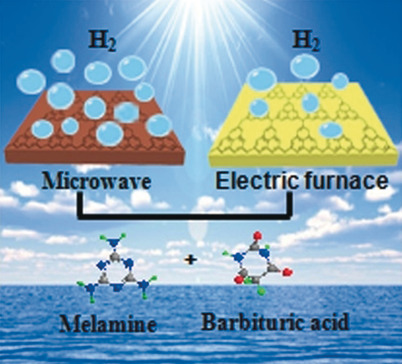
π-Electrons were rapidly and efficiently incorporated into the g-C3N4 by copolymerizing π-electron-rich barbituric acid with melamine via a microwave-assisted heating process. The as-produced g-C3N4 shows a near 20-fold enhancement in H2 generation upon exposure to visible light, representing a rate of 25.0 μmol h−1 over 1.3 μmol h−1 from g-C3N4 produced by conventional heating in an electric furnace.
Antibiotics
Non-Hydrolytic β-Lactam Antibiotic Fragmentation by l,d-Transpeptidases and Serine β-Lactamase Cysteine Variants
- Pages: 1990-1994
- First Published: 20 December 2018

Weapon of choice: Penicillin-binding proteins and serine β-lactamases, which employ nucleophilic serines, hydrolyze β-lactam antibiotics. However, the l,d-transpeptidases, which employ nucleophilic cysteines, also fragment some β-lactams. Serine β-lactamases where the nucleophilic serine is substituted with cysteine also catalyze β-lactam fragmentation, consistent with a mechanism involving the formation of thioester-enolate intermediates.
Reaction Mechanisms
Facile Conversion of syn-[FeIV(O)(TMC)]2+ into the anti Isomer via Meunier's Oxo–Hydroxo Tautomerism Mechanism
- Pages: 1995-1999
- First Published: 16 December 2018
![Facile Conversion of syn-[FeIV(O)(TMC)]2+ into the anti Isomer via Meunier's Oxo–Hydroxo Tautomerism Mechanism](/cms/asset/bfd4b6e7-e975-46f3-891a-252364a75505/anie201811454-toc-0001-m.jpg)
Not a ferryl flip: Water converts the nonheme [FeIV(Osyn)(TMC)(NCMe)]2+ complex, where the oxo ligand is on the same face of the macrocycle as all four methyl groups (2), into its anti isomer (1), where the oxo ligand is on the opposite face. This conversion occurs not by a ferryl flip, but by the binding of water trans to the oxo atom, with two subsequent consecutive proton transfers to place the oxo atom in the thermodynamically favored anti position.
Self-Assembly
Photooxidase-Mimicking Nanovesicles with Superior Photocatalytic Activity and Stability Based on Amphiphilic Amino Acid and Phthalocyanine Co-Assembly
- Pages: 2000-2004
- First Published: 18 December 2018
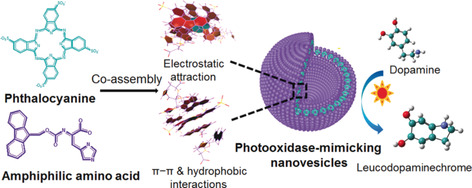
Multiple weak synergetic interactions enable the generation of photooxidase-mimicking nanovesicles that contain an amphiphilic amino acid as a simplified protein host and phthalocyanine as a chlorophyll active site model. These vesicles catalyze the oxidation of dopamine into leucodopaminechrome under aerobic conditions.
Peptide Therapeutics
A Hybrid Platform Based on a Bispecific Peptide–Antibody Complex for Targeted Cancer Therapy
- Pages: 2005-2010
- First Published: 02 January 2019
Gold–Hydrogen Bonding
Spectroscopic and Computational Evidence of Intramolecular AuI⋅⋅⋅H+−N Hydrogen Bonding
- Pages: 2011-2016
- First Published: 02 January 2019
Medical Imaging
CT/MRI-Guided Synergistic Radiotherapy and X-ray Inducible Photodynamic Therapy Using Tb-Doped Gd-W-Nanoscintillators
- Pages: 2017-2022
- First Published: 27 December 2018
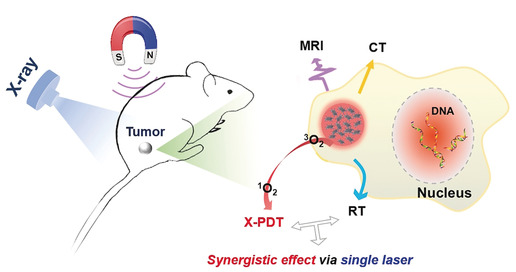
Two for the price of one: A multifunctional nanoagent based on Gd2(WO4)3:Tb@MC540 nanoparticles with capabilities for dual-modal CT/MRI-guided synergistic radio-/X-ray inducible photodynamic therapy of tumors was developed. This type of therapy exhibits a higher tumor growth inhibition efficiency than radiotherapy alone, indicating a promising prospect of nanoscintillators for cancer theranostics.
[3]Cumulenes
Structural and Electronic Effects of Stepwise Reduction of a Tetraaryl[3]Cumulene
- Pages: 2023-2028
- First Published: 17 December 2018
![Structural and Electronic Effects of Stepwise Reduction of a Tetraaryl[3]Cumulene](/cms/asset/5a377646-7771-4c72-b7f2-87bf87372699/anie201812283-toc-0001-m.jpg)
Cumulene or alkyne? The reduction of a [3]cumulene using Na and K in the presence of 18-crown-6 gives the mono- and doubly reduced cumulenes as solvent-separated ion pairs. The analogous reduction with Cs affords a contact-ion complex. Crystallographic analysis of all the species shows dramatically increased bond-length alternation upon reduction, while the cumulenic framework remains essentially planar in all cases.
2D Materials
Activation of MoS2 Basal Planes for Hydrogen Evolution by Zinc
- Pages: 2029-2033
- First Published: 02 January 2019
Polycycles
Dinaphthobenzo[1,2:4,5]dicyclobutadiene: Antiaromatic and Orthogonally Tunable Electronics and Packing
- Pages: 2034-2039
- First Published: 19 December 2018
![Dinaphthobenzo[1,2:4,5]dicyclobutadiene: Antiaromatic and Orthogonally Tunable Electronics and Packing](/cms/asset/ac02334e-0b13-46df-8a45-5f28d78af49b/anie201812581-toc-0001-m.jpg)
Introducing strong antiaromaticity: Reported here is a modular and efficient synthesis of a series of dinaphthobenzo[1,2:4,5]dicyclobutadienes with strong antiaromaticity, orthogonally tunable electronics and molecular packing, and high charge mobility. These features allow the application of the structures in organic electronics. CANAL=catalytic arene-(oxa)norbornene annulation.
Supramolecular Chemistry
Unbiased Rotational Motions of an Ellipsoidal Guest in a Tight Yet Pliable Host
- Pages: 2040-2044
- First Published: 14 December 2018
Imaging
Homo-molecular Fluorescence Complementation for Direct Visualization of Receptor Oligomerization in Living Cells
- Pages: 2045-2049
- First Published: 18 December 2018
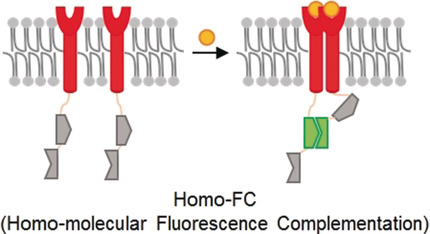
An identical probe complementation system was developed by flopped fusion of charge-engineered fluorescent protein fragments. The probe was applied for the reliable and robust visualization of the homo-oligomerization of diverse receptors (GPCR, EGFR, DAI) in live cells with extremely low background signals.
Biosensors
Precise In Vivo Inflammation Imaging Using In Situ Responsive Cross-linking of Glutathione-Modified Ultra-Small NIR-II Lanthanide Nanoparticles
- Pages: 2050-2054
- First Published: 27 December 2018
Nanoplates | Very Important Paper
A Metastable Crystalline Phase in Two-Dimensional Metallic Oxide Nanoplates
- Pages: 2055-2059
- First Published: 19 December 2018
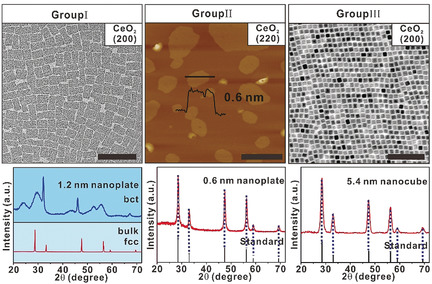
The metastable bct phase was only observed in ultrathin cerium oxide nanoplates. Thermodynamic energy analysis confirmed that the surface energy of the ultrathin nanoplates is the cause of the remarkable stabilization of the metastable bct phase. The mechanism of surface energy regulation can be expanded to other metallic oxides, thus providing a means for manipulating and stabilizing such materials under ambient conditions.
Perovskite OER
Remarkable Oxygen-Evolution Activity of a Perovskite Oxide from the Ca2−xSrxFe2O6−δ Series
- Pages: 2060-2063
- First Published: 21 December 2018
Cross-Coupling
Base-Mediated Defluorosilylation of C(sp2)−F and C(sp3)−F Bonds
- Pages: 2064-2068
- First Published: 21 December 2018

Base motive: A base-promoted defluorosilylation of unactivated C(sp2)−F and C(sp3)−F bonds, obviating the need for transition-metal catalysis, specialized ligands, or harsh reaction conditions, has been developed. The salient features of this method are the mild reaction conditions, ease of execution, and wide substrate scope, even within the context of late-stage functionalization of advanced fluorinated building blocks, thus offering a complementary reactivity mode to existing silylation technologies.
Mini-LEDs | Hot Paper
Broadband Cr3+, Sn4+-Doped Oxide Nanophosphors for Infrared Mini Light-Emitting Diodes
- Pages: 2069-2072
- First Published: 16 December 2018
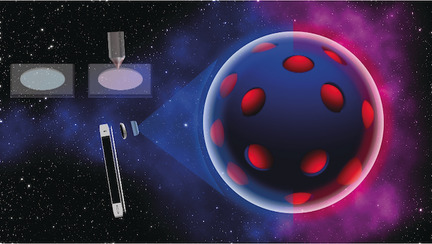
Nanophosphors on display: Mesoporous silica nanoparticles were used as nanocarriers to form the nanophosphor ZnGa2O4:Cr3+,Sn4+ (ZGOCS) in the mesoporous structure after sintering. Good dispersity and morphology can be observed. Good packing density and light conversion efficiency were achieved for a mini-light emitting diode.
Photocatalysis | Hot Paper
Z-Scheme 2D/2D Heterojunction of Black Phosphorus/Monolayer Bi2WO6 Nanosheets with Enhanced Photocatalytic Activities
- Pages: 2073-2077
- First Published: 02 January 2019
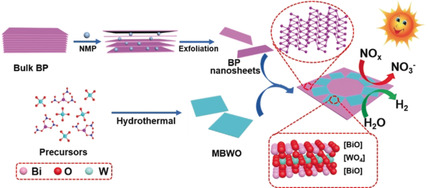
A Z-scheme heterojunction of 2D/2D black phosphorus/monolayer Bi2WO6 was fabricated with enhanced photocatalytic performance under visible light irradiation. The highest NO removal ratio was up to 67 % and the H2 evolution ratio 21 042 μmol g−1. The black phosphorus nanosheets can be used for photocatalytic degradation of exhaust gases in air.
C−H Borylation
Rhodium-Catalyzed PIII-Directed ortho-C−H Borylation of Arylphosphines
- Pages: 2078-2082
- First Published: 06 January 2019
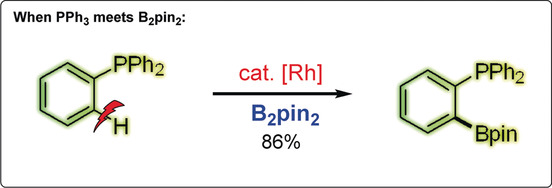
More than a ligand: A rhodium catalytic system has been established for the direct and ortho-selective borylation of commercially available arylphosphines by PIII-directed C−H activation. A series of ortho-boronated phosphines with different steric and electronic properties were obtained in high yields.
Protein Engineering | Hot Paper
Directed Evolution of a Designer Enzyme Featuring an Unnatural Catalytic Amino Acid
- Pages: 2083-2087
- First Published: 21 December 2018

Designer enzyme: The directed evolution of a designer enzyme featuring a uniquely reactive aniline side chain as catalytic residue (in red) is reported. Multiple beneficial mutations were identified (blue), which when combined increase the turnover frequency (kcat) of the designer enzyme by more than 90 times.
Rhodium Catalysis | Very Important Paper
Donor Rhodium Carbenes by Retro-Buchner Reaction
- Pages: 2088-2092
- First Published: 18 December 2018
Lithium Anodes | Very Important Paper
Anchoring an Artificial Solid–Electrolyte Interphase Layer on a 3D Current Collector for High-Performance Lithium Anodes
- Pages: 2093-2097
- First Published: 02 January 2019
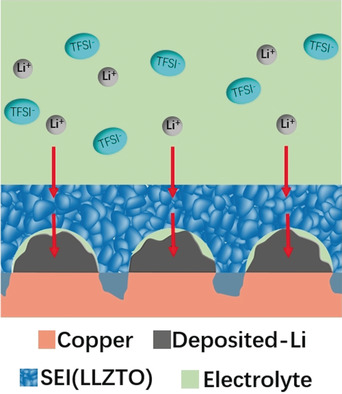
3D copper anchored with an artificial solid–electrolyte interface (SEI) layer is proposed for Li-plating. The anchoring construction of 3D copper and SEI layer can lower current density, provide buffer space, reduce lithium/electrolyte contact, and endure Li-deposition-induced volume change, leading to high-performance lithium anode with long lifespan, high rate, high area capacity, and high efficiency.
Nonlinear Optical Materials | Hot Paper
A Facile Route to Nonlinear Optical Materials: Three-Site Aliovalent Substitution Involving One Cation and Two Anions
- Pages: 2098-2102
- First Published: 27 December 2018
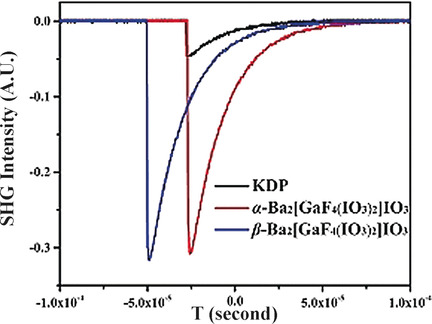
Trading places: Two new nonlinear optical materials, α- and β-Ba2[GaF4(IO3)2](IO3) (1 and 2), were designed via three-site aliovalent substitution of VO4F2 in α- and β-Ba2[VO2F2(IO3)2](IO3) by GaO2F4. The new materials display large second-harmonic generation responses (≈6×KH2PO4 (KDP)), wide energy band gaps (4.61 and 4.35 eV), and high laser damage thresholds (29.7× and 28.3× relative to that of AgGaS2).
Thin Films
Conductive Fused Porphyrin Tapes on Sensitive Substrates by a Chemical Vapor Deposition Approach
- Pages: 2103-2108
- First Published: 17 December 2018
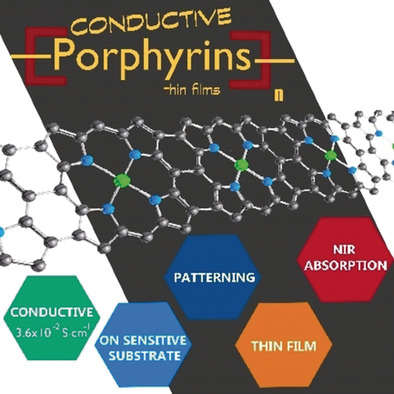
Directly fused metalloporphyrin tapes were simultaneously synthesized and deposited in a thin film form by scalable and substrate-independent chemical vapor deposition (CVD). Patterned and conductive (3.6×10−2 S cm−1) conjugated poly(porphyrin) thin films are formed. Mass spectrometry provides insight into the oxidative polymerization reaction and two side reactions (metalloporphyrin chlorination and π extension via intramolecular ring fusion).
DNA Nanomaterials
Freezing-directed Stretching and Alignment of DNA Oligonucleotides
- Pages: 2109-2113
- First Published: 27 December 2018

Cold as ice: Freezing DNA oligonucleotides stretches and aligns random coils, as confirmed using fluorescence resonance energy transfer, thiazole-orange staining, and surface-enhanced Raman spectroscopy. This will have interesting implications for biointerface science, biosensors, and DNA nanotechnology.
Cycloaromatization
Dual Gold-Catalyzed Cycloaromatization of Unconjugated (E)-Enediynes
- Pages: 2114-2119
- First Published: 19 November 2018
Rhodium Catalysis
High iso Aldehyde Selectivity in the Hydroformylation of Short-Chain Alkenes
- Pages: 2120-2124
- First Published: 18 December 2018
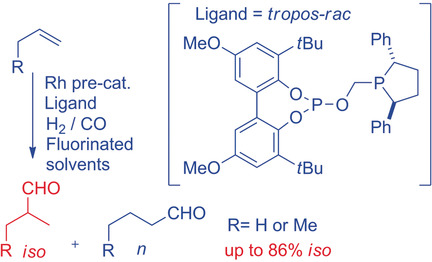
The hydroformylation of propene to give predominantly iso-butanal has been achieved; class-leading selectivity is possible even at higher temperatures that deliver fast conversion. Racemic rhodium complexes of bidentate phospholane phosphites derived from tropos-biphenols and unusual solvent systems are the key to the selectivity observed.
Homogeneous Catalysis
Proton Relays in Molecular Catalysis of Electrochemical Reactions: Origin and Limitations of the Boosting Effect
- Pages: 2125-2128
- First Published: 13 December 2018
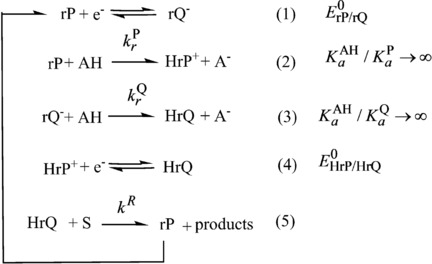
Homogeneous catalysis of electrochemical reactions often involves proton-coupled electron-transfer. The conditions that make installing proton relays inside the catalyst molecule lead to a considerable boosting of catalysis instead of being a zero-sum game are analyzed in detail, showing why the proton is such a uniquely appropriate agent for this task.
Aminations | Hot Paper
Reductive Molybdenum-Catalyzed Direct Amination of Boronic Acids with Nitro Compounds
- Pages: 2129-2133
- First Published: 21 December 2018

C−N coupling: A new electrophilic amination of boronic acids with simple and inexpensive nitro compounds has been developed allowing the preparation of a variety of highly substituted and functionalized aromatic secondary amines. The process employs affordable PPh3 as reducing agent, in the presence of an easily available and highly stable dioxomolybdenum(VI) complex as catalyst.
C−H Activation
PdII-Catalyzed Enantioselective C(sp3)−H Activation/Cross-Coupling Reactions of Free Carboxylic Acids
- Pages: 2134-2138
- First Published: 10 December 2018
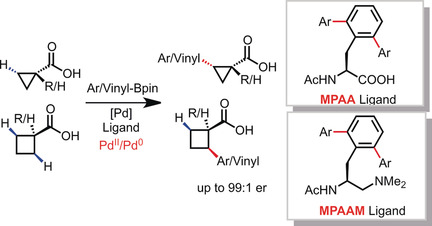
Worth protecting: PdII-catalyzed enantioselective C(sp3)−H cross-coupling of free carboxylic acids with organoborons has been realized using either mono-protected amino acid (MPAA) ligands or mono-protected aminoethyl amine (MPAAM) ligands. A diverse range of aryl- and vinyl-boron reagents can be used as coupling partners to provide chiral carboxylic acids.
Synthetic Methods
Dual Photoredox/Copper Catalysis for the Remote C(sp3)−H Functionalization of Alcohols and Alkyl Halides by N-Alkoxypyridinium Salts
- Pages: 2139-2143
- First Published: 27 December 2018
Catalysis | Hot Paper
Palladium/Norbornene-Catalyzed Indenone Synthesis from Simple Aryl Iodides: Concise Syntheses of Pauciflorol F and Acredinone A
- Pages: 2144-2148
- First Published: 02 January 2019
Asymmetric Catalysis | Hot Paper
PdII-Catalyzed Regio- and Enantioselective Oxidative C−H/C−H Cross-Coupling Reaction between Ferrocenes and Azoles
- Pages: 2149-2153
- First Published: 27 December 2018

An asymmetric C−H/C−H cross-coupling reaction of ferrocenes with azoles such as oxazoles and thiazoles is presented. Palladium(II)/monoprotected amino acid (MPAA) catalytic system exhibits excellent reactivity and regioselectivity for oxazoles and thiazoles. This method offers a powerful strategy for constructing planar chiral ferrocenes.




